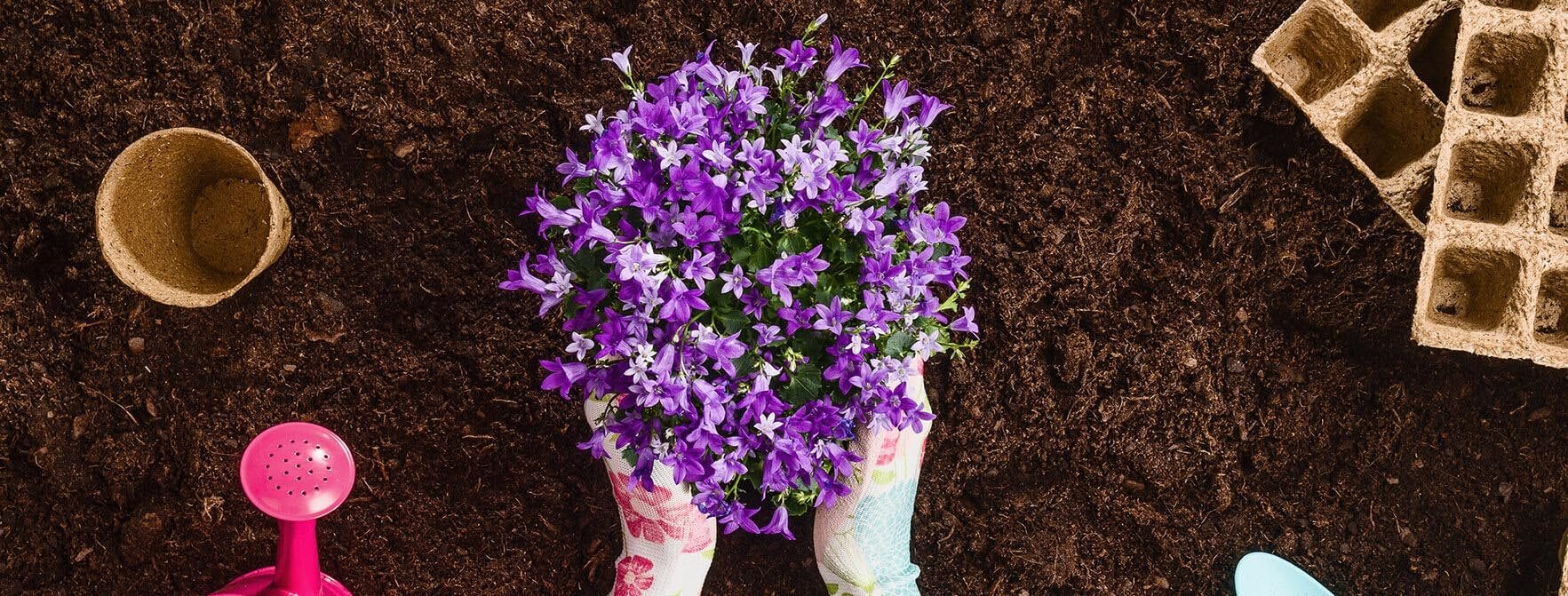
It might seem like a simple undertaking, but a flower garden takes lots of hard work and requires maintenance. Plus, a lot goes into getting it started. Read on to learn more about starting a garden, different types of flowers you can choose, how to prepare the soil, watering, and so much more to get you well on your way to having your own flower garden!
Choosing Flowers
Flowers can turn an ordinary space into a showcase of your hard work. They can make an area “pop” and add color to an otherwise ordinary landscape. With over 400,000 flowering plant species, it can be mind-boggling to try and choose just a handful. Before you get overwhelmed with options, think about which flowers you love seeing.
There are also a number of factors besides personal preference that can guide you towards the right plants for you. Keep in mind that soil type, hardiness, time of bloom, amount of sunlight, and the type of birds you want to attract all play a major role in choosing plants that are right for your garden. There are several overarching types of plants, perennials, and annuals being the most common. Knowing the difference can also help transform your garden and determine the level of maintenance you’re willing to undertake.
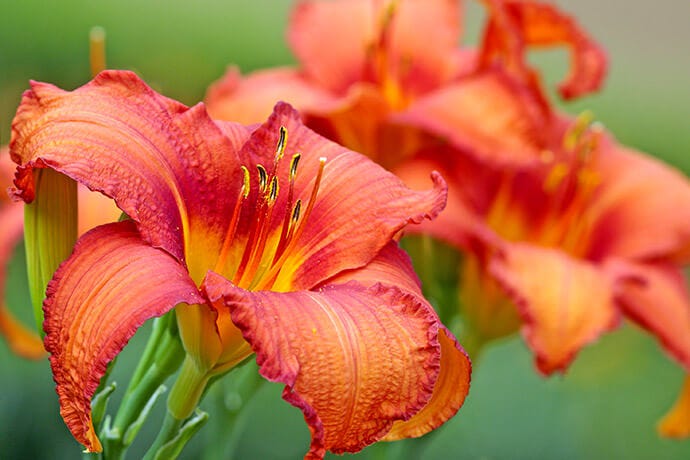
Perennials
Perennials are a type of plant that grows back year after year from its roots. Typically, they will continue to grow in size until they reach their full potential. After that point, they made need to be replanted. These plants are easily divided and can save a gardener lots of money over time. One plant can be turned into many to be planted in different areas of the garden.
Since these plants will stay put year after year, make sure you leave enough space for it to grow much larger. Consider planting annuals or other perennials several feet apart instead of stacked against each other to prevent overcrowding. Extra care in the form of fertilizing and pruning may be required to keep a desired shape or to maintain their health. Several common perennial flowers include purple coneflowers, day lilies, hydrangeas, and peonies.
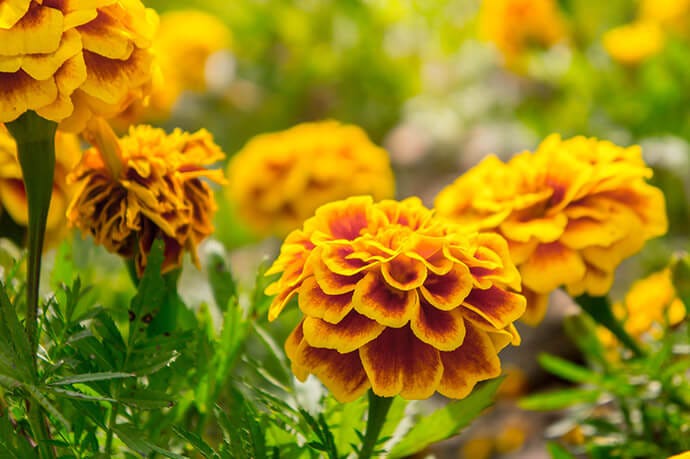
Annuals
Annuals are plants that complete their entire life cycle in one year and need to be planted again each growing season. These type of plants do produce seeds, but they will be spread naturally and they may not land where you want them to grow.
Common annuals include marigolds, geraniums, zinnias, impatiens, cornflowers, begonias, petunias, sweet pea, and pansies.
Choosing a Spot
You might have the most amazing spot picked out only to notice that your plants cannot thrive there. Check the labels on your plants or do some research on the plant species to determine the conditions they need to not only grow but grow well. There are four key factors that go into choosing the perfect spot for your garden: soil, frost dates, plant species, and sunlight.
Soil
The soil is one of the most essential ingredients for crafting the garden of your dreams. Water-logged soil invites fungi and disease and most flowers will have a difficult time growing in those conditions. Clay soil tends to be compacted too much for flowers to grow strong roots and may not grow to their full potential.
Another important factor is pH. This is a scientific term for how acidic or alkaline soil is. Most flowers will fall somewhere near the middle of the scale, so it’s important to keep a healthy balance. A soil test is a cheap and easy way to determine the pH of your soil.
The way you landscape your garden is another important factor. Are you planting on a massive slope? This might lead to erosion and plants may not have enough soil or support to grow well. Try to keep the soil as flat as possible and well-aerated. This will let water flow through but not pool, while keeping the soil soft enough for plants to grow strong and long-reaching root systems.
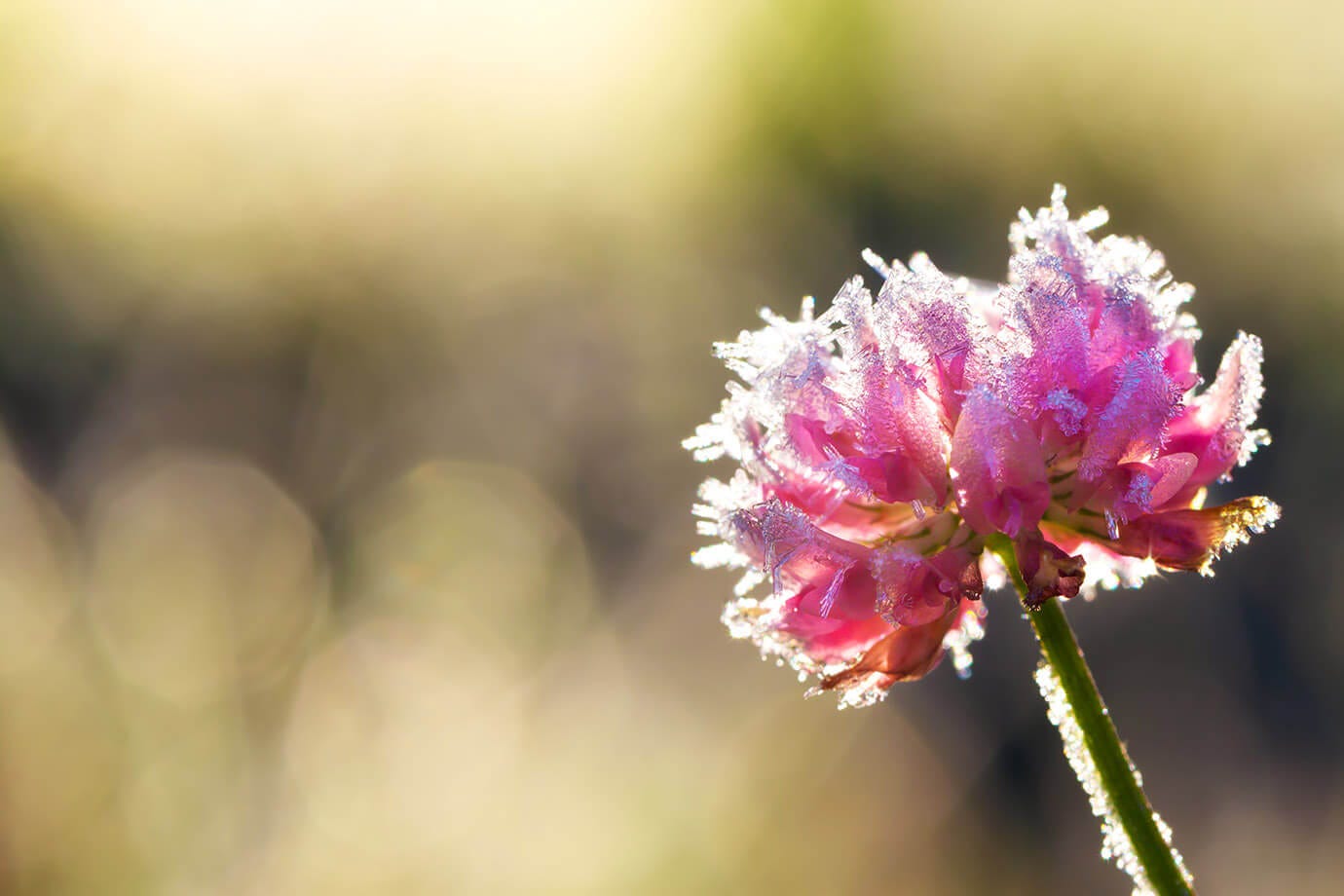
Frost Dates
If you’re in a part of the world that stays warm year-round consider yourself lucky! You can plant year-round and never have to worry whether you’re plants will suffer from frost. Check your local garden centers or go online to check an almanac to see when typical last frost dates fall for your region. Plant flowers after the last frost to ensure they won’t freeze to death before they have a chance to grow. A great way around this is starting to grow your plants inside. Grow your seeds into seedlings and transplant into your outdoor garden when the weather and soil is warm enough.
Sunlight
Every plant needs sunlight to grow and undergo photosynthesis, however, some need more than others. Zinnias, sunflowers, lavender, petunias, and marigolds love soaking up the sun all day long. On the other hand, there are many shade-loving flowering plants like hostas, begonias, hydrangeas, and pansies. Most plants can tolerate between 6-8 hours of sunlight a day, but this varies depending on the species. Be sure to plant each species in an area where they get just the right amount of shade. Otherwise, they may not grow as well or at all.
Plant Species
Every flower is different and requires a slightly different combination of soil types, pH, temperature, water, and sunlight to not only survive but thrive. Be sure to research and read the labels on each plant you bring to your garden so you can make the best choice on where to place them.
Preparing the Soil
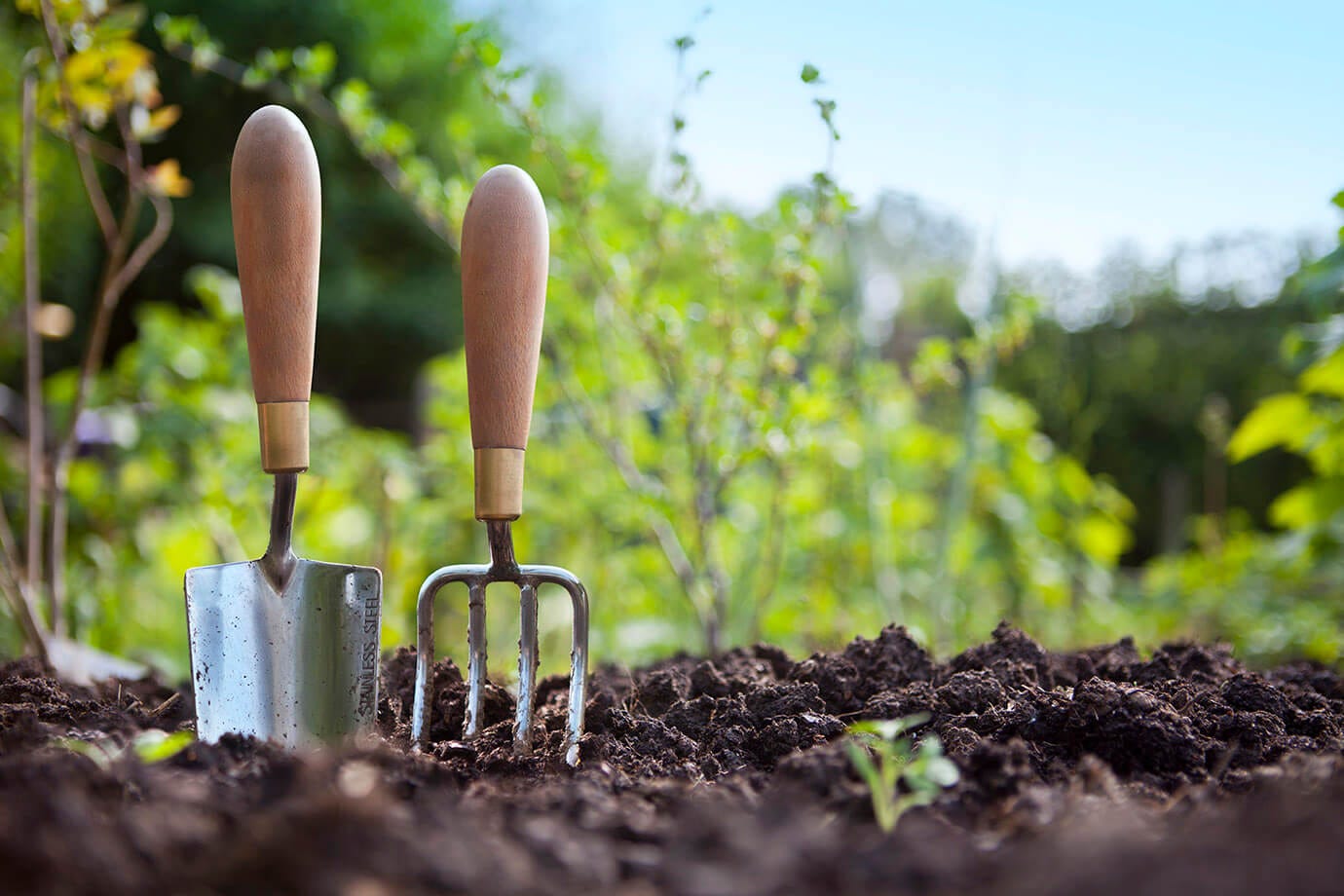
You’ve found the perfect spot and chosen your plants. Now it’s time to whip that soil into shape and make it the best environment your plants could ever wish for. The more effort you put into creating healthy soil, the less maintenance your garden will need in the future. Most plants get the nutrients they need from the soil. Healthy soil contains millions (hopefully) of microscopic microbes that fight off disease and bring nutrients to the soil. But how do we go about getting the soil to that point? Glad you asked.
- Clear Debris – Remove any sticks, leaves, rocks, weeds, or other items that may be cluttering your new gardening space. Having a clean slate to start your garden is essential and makes gardening that much easier.
- Add Organic Matter – Going organic in your gardening is one of the smartest things you can do. By adding organic materials, such as compost and organic fertilizer, you are contributing nutrients to the soil without adding harmful chemicals. The extra nutrients in the soil will help your plants grow strong in a sustainable manner.
- Landscape – Monitor the area near your newly planned garden. Does it drain well? Some areas tend to be more water-logged than others and need landscaping to drain well. This doesn’t mean hiring an expensive service, thank goodness. Simply tilling the soil, systematically moving dirt from one area to another, or even adding mulch can make a huge difference.
- Work the Soil – Before planting, till the soil or dig trenches to work the soil. You want your soil to be moist enough to form into a ball in your hands, but dry enough to fall apart when you drop it. The dirt should feel spongy instead of hard. Dense, compacted soil does not allow plants to grow deep root systems. The more shallow a plant’s root system the less access it has to nutrients and water. It will also not be as stable in the ground and more prone to falling over.
Planting
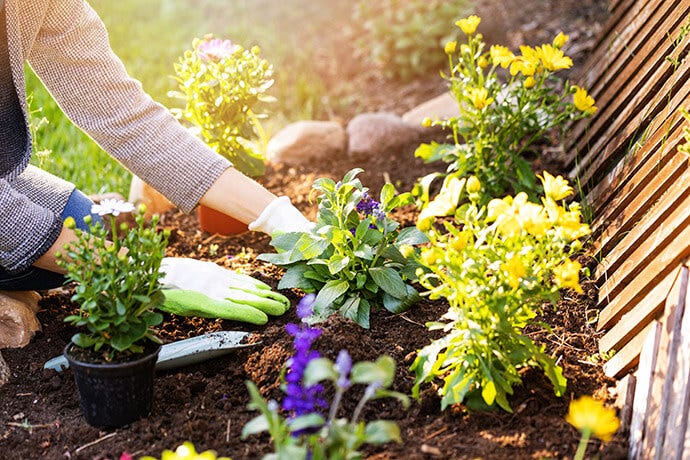
It’s time for the fun part! The soil is prepped, plants have been bought, and now, it’s planting time. There are some species of flowers, like pansies, that tolerate the cold, but most flowering plants prefer warmer temperatures. As soon as late spring hits, it’s gardening season.
There are two ways to plant. You can start from scratch and plant seeds or you can buy seedlings and transplant them into your garden when the time is right.
If you’re starting with seeds, you can plant them directly in the freshly prepared soil or you can start them inside earlier in the season to avoid any chance of frost harming them. There are containers readily available at any gardening center or you can reuse items from your home, such as egg cartons.
With seedlings, nurture them inside until the last frost and then follow the instructions on the label for planting depth and amount of sunshine needed to determine placement. To plant, remove the plant from its container and make sure the roots are mostly separated and not conjoined in a large ball. Then, place in the ground and water well.
Maintenance
Unfortunately, gardens take lots of work, but they are well worth it in the end. Flowers need to be watered each week if rainfall has not occurred and weeds should be regularly pulled so they do not compete with your flowers for nutrients or water.
If you’ve taken care to cultivate healthy soil, there will be little need to use fertilizer, however, if you have an abundance of plants, using an organic fertilizer can give them a welcome nutrient boost.
Most flowers with multiple blooms will require some sort of pruning to keep a desired shape. Snip or prune dying flowers to trick a plant into growing more, a process called deadheading. Once plants produce seeds they get a signal that they are done growing, especially where annuals are concerned. To keep them growing those beautiful blooms, remove the dying flowers so new ones will take their place.
Watering
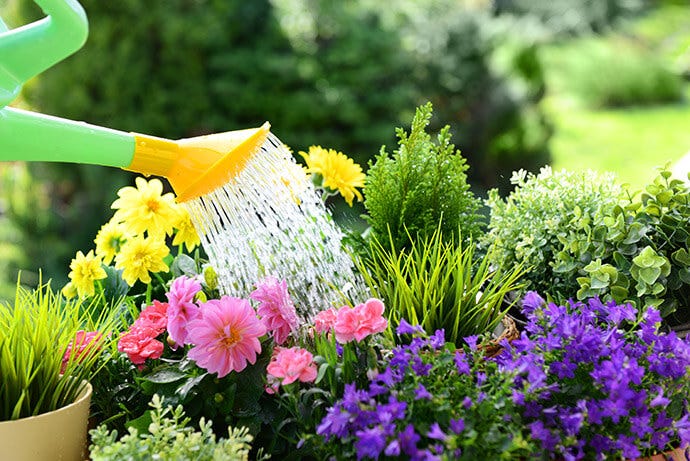
There is no magic number that tells you exactly how much water a plant needs in any given week. If it’s very rainy in your area, you might not even have to water your flowers at all! If you live in a drier or windy area, watering might be needed 1-4 times a week to prevent the soil from drying out.
Time your watering so it does not happen at the hottest point of the day. Water in the morning or evening to ensure the water has enough time to seep into the soil where your flowers can benefit from it. Otherwise, it may evaporate and your flowers might not get any water at all!
Mulching
Mulch is a flower garden’s best friend. Not only does it make a garden look tidy and well cared for, but it also provides a number of benefits to your plants. Mulch helps prevent weeds by smothering them as they grow from the soil. If they never get any sunlight due to the thick layer of mulch covering them, then you don’t have to worry about pulling weeds.
Mulch is also a great insulator. In colder climates, mulch can keep your plants several degrees warmer and protect them from frost. It also helps to keep moisture in, helping flowers to persist through dry conditions.
Try to use a mulch made from organic matter such as bark chips or compost. As they break down, they will naturally fertilize the soil and contribute to soil health.
Pest Control
With every flower garden comes some sort of nuisance animal that wants to eat it. Whether large or small, animals can inflict major damage to your garden and cause lots of frustration. Take a look below for some of the most common garden pests and how to get rid of them.
- Moles – While they won’t eat your flowers, they will tunnel through your garden and upend whole plants in their search for earthworms. Repellents and sonic spikes are the most humane way to get rid of these pests.
- Deer – No other animal causes more damage to a garden than deer, or so it seems. They will sit on your plants, eat your plants, and even knock them over. Plant prickly or fuzzy plants to help deter them from eating everything in your garden. In addition, use a variety of repellents such as sprays, stations, and sprinklers.
- Rabbits – These small creatures love to munch on flowers. Try planting unappealing flowers such a daffodils and basil to deter them from the plants they truly love. Repellents, sprinklers, and live cage traps are a great way to keep these pests at bay.
- Squirrels – While they won’t eat your flowers, they will dig near them to bury their food for the winter. Live cage traps and repellents are the most effective means of keeping these pests away from your garden.
- Skunks – They may be stinky, but they are also a nuisance. Skunks prefer to eat grubs that lurk just under the surface of the soil. They will dig anywhere they think might yield a grub or two even if that means tearing through your lawn or garden. Use a repellent or live cage trap to keep them from returning.
Tips
- Plant Where You Can See It – Some people plant gardens in a lonely corner of their yard. Keep plants in your line of sight so you can monitor their health and needs. Some might suddenly become droopy or become infested with insects. Make sure to keep your garden in sight so it never goes out of mind.
- Overestimate – It’s better to overestimate how much time and effort will go into your garden. Start small, especially if it is your first flower garden, so you can see just how much time it will take and nothing will be overlooked.
- Don’t Crowd Your Plants – As plants grow from seedlings into full-fledged plants, they will continue to get bigger and require more space. If you’ve planted in every available inch of space, your plants will have to compete for nutrients and water. Give each plant several inches of space to anticipate their growth.
- Keep It Convenient – Gardening is hard work, but there are plenty of ways to make it easier on yourself. Establish your flower garden near a water source, if possible, so it’s easy to water and eliminates the need to lug heavy watering cans or hoses across the yard.
- Feed Your Plants – While you may have improved your soil health, it is always best to give it a boost every now and then. As plants use nutrients, the soil might not be able to always keep up replenishing them. Add compost or an organic fertilizer to keep the soil as healthy and nutrient rich as possible.

